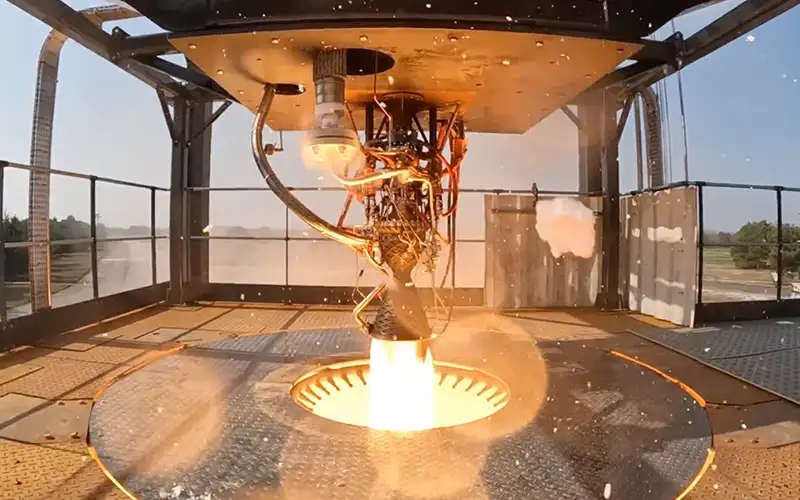
French rocket builder Latitude has announced its successful completion of the first hot fire test of a flight-ready version of its Navier rocket engine’s combustion chamber.
Founded in 2019, Latitude is developing a two-stage rocket called Zephyr that will initially be capable of delivering up to 100 kilograms to low Earth orbit. The company is currently targeting 2026 for the rocket’s inaugural flight.
On 8 April, the company announced it had reached a significant milestone in the development of Zephyr with the first pressurised ignition test of the Navier engine’s combustion chamber in its flight configuration. The ten-second test was conducted at the company’s Titan testing centre in Vatry, near Reims, using its new, purpose-built test bench. According to the company, the data collected from the successful test will inform its upcoming long-duration tests.
“Latitude has chosen to base Zephyr’s propulsion system on so-called ‘simple’ technologies that have been well-proven in the space industry for decades, notably the LOx/RP1 propellant combination,” said newly appointed CEO Aurélie Bressollette. “The goal is to quickly offer small satellite operators a functional and cost-effective dedicated launch solution by leveraging existing and robust propulsion technologies.”
With the successful completion of this important step in its development journey, the company will now look ahead to testing a fully integrated Navier engine. According to an 8 April press release, Latitude expects to reach this next milestone in the “next few months.”
Zephyr, which will stand 19 metres tall, will use seven Navier engines on its first stage and one vacuum-optimised Navier engine on its second. Following the introduction of the initial Zephyr variant in 2026, Latitude plans to develop an upgraded version that will double the rocket’s payload capacity to 200 kilograms. This performance boost will be driven primarily by more powerful Navier engines, which, according to the company, will deliver “four times the thrust compared to the previous version.”





